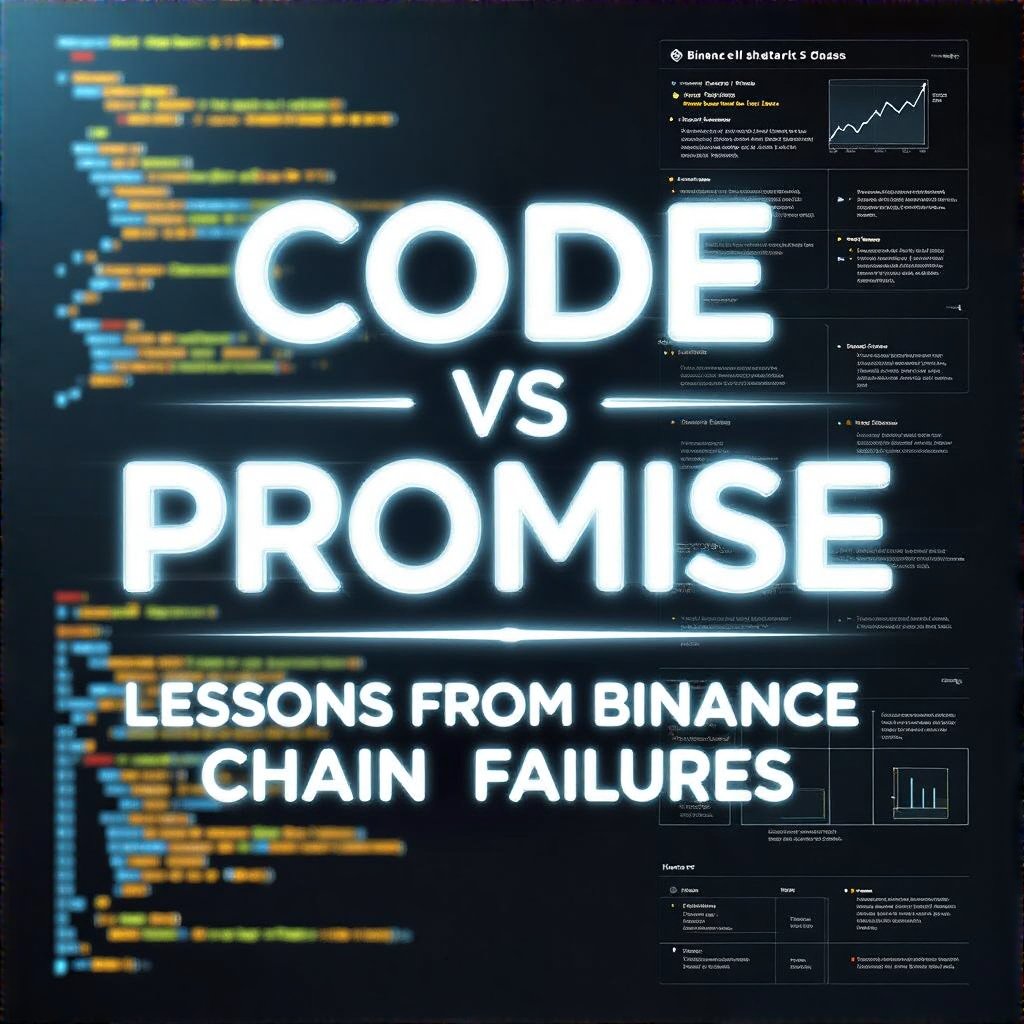Lessons from Binance Smart Chain Project Failures

The Binance Smart Chain (BSC) hosts a culture of rapid token launches and ambitious promises. While this accelerates innovation, it also widens the gap between what is promised in whitepapers and what code actually delivers. From a governance and security perspective, understanding why projects fail helps investors and builders separate sound ideas from hype.
- Market Volatility & Hype-Driven Launches
- Weak Tokenomics & Unsustainable Incentives
- Lack of Development & Roadmap Fulfillment
- Scams, Red Flags & Due Diligence
- Protecting Your Investments: Practical Steps
- Frequently Asked Questions
Market Volatility & Hype-Driven Launches
Market cycles shape project viability more than most people admit. A bullish phase lures capital with optimistic narratives; when sentiment shifts, there is little cushion for undercooked products. This is intensified when teams lean on pumps and hype rather than real utility. Investors should quantify traction: user growth, demonstrable product iterations, and credible partnerships carry more weight than social metrics alone. Regulators emphasize risk controls; in crypto, the best protection is rigorous due diligence and a skeptical mindset.

To guard against investing on hype alone, compare the roadmap against actual deliverables and budget burn. A credible plan includes concrete milestones with dates and tested prototypes rather than vague promises. See tokenomics best practices in the linked analysis, and cross-check against governance patterns described in DeFi governance mechanisms. Where appropriate, consider external regulatory perspectives such as SEC guidance to frame risk, while recognizing that the primary signal remains the quality of the code and the maturity of the project’s governance.
Weak Tokenomics & Unsustainable Incentives
Tokenomics are not a marketing hook; they are the gravity that keeps a project alive. Pitfalls include over-concentration of tokens, inflated rewards without utility, and fragile liquidity. Such designs invite rug pulls, sudden unlock events, or mass exoduses when incentives stop paying out. A robust model shows vesting, clear utility, and predictable post-launch revenue or usage paths. For investors, robust tokenomics correlate with real-world adoption rather than speculative cycles.
To evaluate tokenomics properly, see tokenomics best practices, and cross-check against a credible audit. Also review upgradeability risks that could enable backdoors or governance manipulation. Transparency in token flow and a defensible distribution strategy are signs of code reality lining up with promises. Opaque governance is a red flag that should trigger deeper scrutiny.
Lack of Development & Roadmap Fulfillment
Launch momentum without ongoing development is a warning sign. Credible projects publish regular updates, provide API access or testnet milestones, and release incremental features that demonstrate progress. When development stalls or teams go silent, community trust erodes and capital migrates to more reliable platforms. This is where governance design and disclosure practices intersect with code quality: the two must reinforce each other to avoid becoming a ‘hidden back door’ for failure.
Scams, Red Flags & Due Diligence
The BSC ecosystem has seen rug pulls, honeypots, and anonymous teams. To mitigate risk, require independent audits, transparent liquidity management, verifiable team identities, and open-source code with ongoing improvements. For red flags, see red flags and consult credible analyses. Regulators and watchdogs have issued warnings; for example, see SEC investor alerts, and Bloomberg's coverage of market crashes and scams as part of the broader crypto history.

Protecting Your Investments: Practical Steps
A practical framework combines due diligence, risk assessment, governance awareness, and ongoing monitoring. Start with a critical review of the whitepaper's realism, verify audit outcomes for disclosed findings, and assess token distribution and vesting to understand centralization risk. This approach reduces the temptation to chase ephemeral value and keeps focus on measurable progress.
| Aspect | Recommendation |
|---|---|
| Whitepaper credibility | Cross-check claims with code and audits |
| Tokenomics integrity | Assess vesting, liquidity, and burn mechanisms |
| Governance transparency | Inspect proposal history and voting records |

Frequently Asked Questions
Q: What is the single best signal of a project’s long-term viability? A: A transparent, audited roadmap with verifiable milestones and ongoing development.
Q: How can I quickly assess tokenomics risk? A: Look at supply dynamics, vesting schedules, liquidity depth, and real utility.
Conclusion: The crypto space rewards careful due diligence and critical thinking. The only law that truly matters is the code, and the code’s governance design ultimately determines risk.
